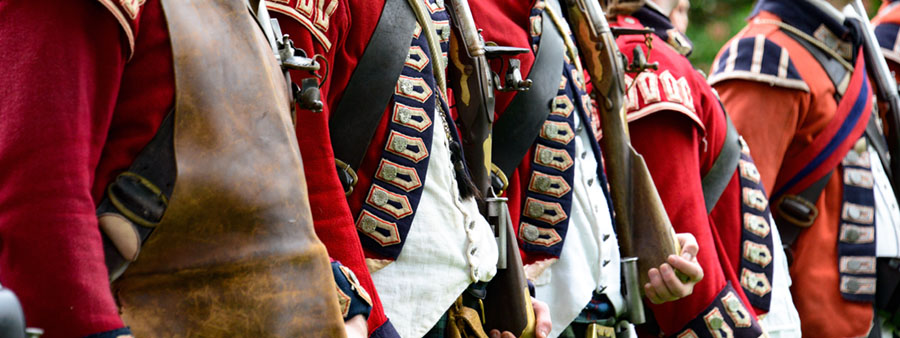
Our American Revolution 1775 to 1783
American Revolution 1775 to 1783 Resulted in Independence From Britain. American Revolution Today Will Result in Our Independence From Tyrannous Banking Elites.
The American Revolution 1775 to 1783 victory was the result of many factors, none of which were more important than another.
George Washington could only look back at the ups and downs of eight years and explain the victory as the intervention of “Divine Providence.”
Washington’s leadership during the American Revolution was clearly one of the principal factors in American success.
Washington was astonished with the victory of a weak and divided confederation of American states over the greatest power of the age.
The British had forfeited several chances for military victory in 1776-77 and again in 1780 when they might have won, had they been able to add 10,000 fresh soldiers.
American military leaders had their own genius, being more resourceful and imaginative than the British commanders and also profiting from their mistakes.
Nathaniel Greene, Henry Knox, Daniel Morgan, and Benedict Arnold along with Washington showed remarkable military abilities, as did foreign volunteers Steuben and the young Lafayette.
Only dedicated men could have endured the hardships of the march to Quebec, the crossing of the Delaware, Valley Forge, Morristown, and Greene’s forced marches in the southern campaign. Witness the battles of the American Revolution.
Americans Fought for Cause of Freedom
The same spirit however was not demonstrated by British and Hessian soldiers. Their strengths showed up principally in situations where discipline and training counted most.
The American militia were men who fought battles and then went home, but they still also demonstrated loyalty to the cause of freedom.
The great contributions of the militia must be recognized in any fair and balanced viewpoint.
The patriots had established a firm political control over the colonies long before the British were in any position to challenge the situation that made the British task so difficult in the first place.
With all this the Americans still required French aid money, supplies, and in the last phase military force, to win a decisive and clear-cut military victory.
France Lends Aid
France provided most of the muskets, bayonets, and cannon used by the Continental Army during the American Revolution.
The French also sought to control the seas that were so important to the British and forced them to divert forces from the American mainland to other areas.
French aid was doubly necessary because the American war effort lacked strong national direction.
The final stroke at Yorktown was possible only because of the temporary predominance of French naval power off the American coast and the presence of a French army.
Power to Raise Armies and Navies
It is not surprising that in 1787 nearly all those who had struggled so long and hard as leaders in the American Revolution 1775 to 1783 Continental Army, or in administrative positions under the Congress, were also supporters of a new constitution.
This new constitution would help in creating a central government with a strong executive leader and the power to “raise armies and navies,” call out the militia, and levy taxes directly to support itself.
The American Revolution 1775 to 1783 soldiers were driven to develop the same expertise as the British soldiers, while the British adapted to the American terrain and tactics by themselves employing skirmishers and fighting when possible from behind cover.
American Revolution 1775 to 1783: Steuben
George Washington was a military conservative, but Wilhelm Von Steuben’s training program equipped American troops to fight in the European style, along with increased use of light infantry.
The militia guerrilla tactics which were part of many battles were not the result of Washington or his leading subordinates’ plans, but just a natural result of circumstances over which they had little control.
The American rifle did not play a decisive role in the American Revolution 1775 to 1783, although it was useful in guerrilla actions or in the hands of skirmishers.
The rifle was of great value in wooded areas, as at Saratoga and King’s Mountain, but for open-field fighting its slow rate of fire and lack of a bayonet made it inferior to the musket.
Since both American Revolution 1775 to 1783 militia and Continentals played roles in winning the war, two diametrically opposed schools of thought arose on American military policy: the one advocating a large Regular Army, the other reliance on the militia as the standard of national defense.
George Washington never believed the infant republic needed a large standing army but a militia could be trained and organized to form a reliable national reserve.
A Well Regulated Militia
The lesson Washington drew from the American Revolution was that the militia should be ”well regulated,” that is, trained and organized under a uniform national system in all the states and subject to call into national service in war or emergency (National Guard).
The rights of freedom and equality, proclaimed in the Declaration of Independence, also produced a corresponding obligation for all citizens to serve their country in the military.
This concept foretold the end of eighteenth century limited war, fought by professional armies officered by an aristocratic class.
As Wilhelm Von Steuben so well recognized, American Continentals were not professional soldiers in the European sense, and neither was the militia. They were, instead, a people’s army fighting for a cause.
In this way, the American Revolution began the “democratization of war,” a process that was eventually to lead to national draft and a new concept of total war for total victory.

 My First Amazing Ayahuasca Experience
My First Amazing Ayahuasca Experience  Pine Needle Tea
Pine Needle Tea  The REAL Controllers of Humanity: The Papal Bloodlines
The REAL Controllers of Humanity: The Papal Bloodlines  Is it Global Warming or Cooling?
Is it Global Warming or Cooling?  Gun Rights and Obama Examined
Gun Rights and Obama Examined